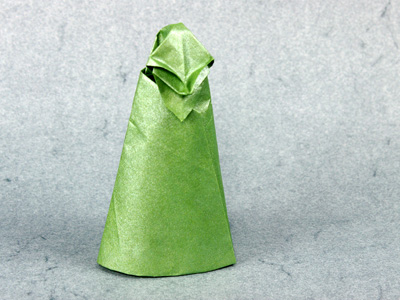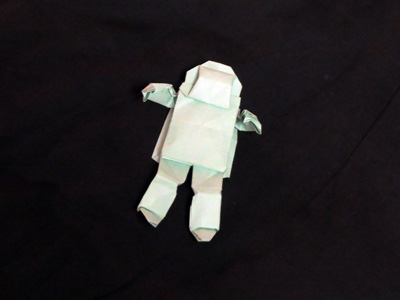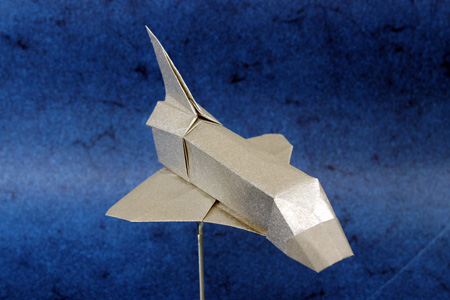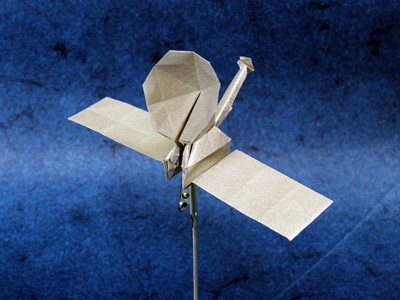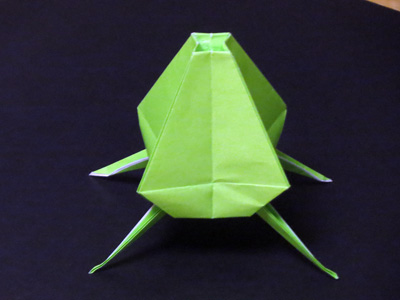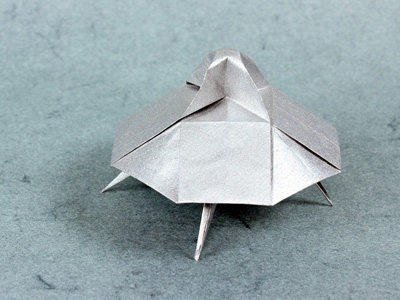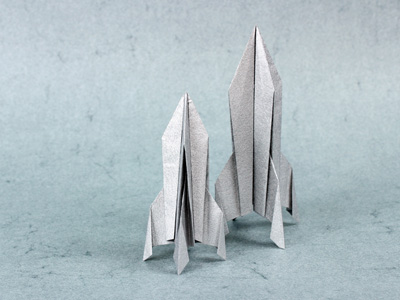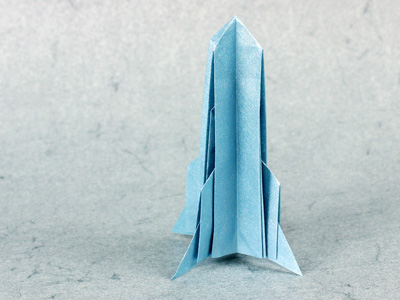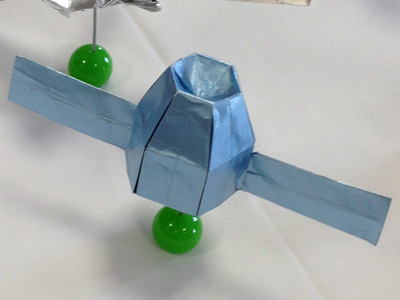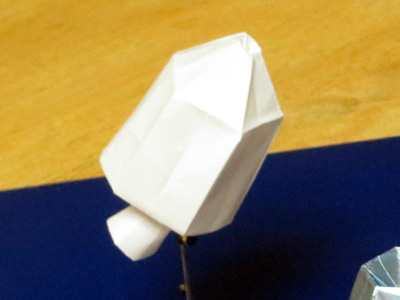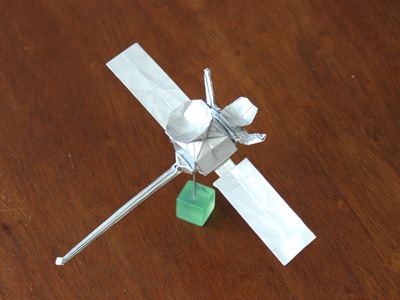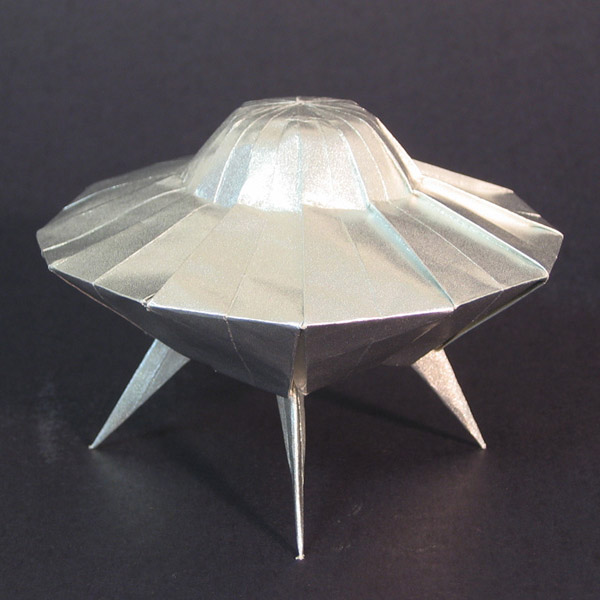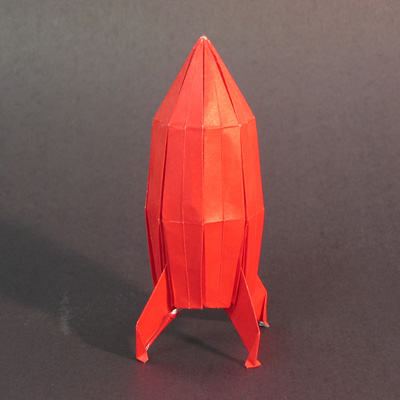Martian
2017
According legend these wise aliens originate from a planet much further away, but since humans first encountered them on Mars, the name stuck. This model was designed to be a companion for the Astronaut and to complete the Air and Space book. The eyes use a fold similar to the Astronaut's visor.
Astronaut
2015
Based on a half-remembered box-pleated frog someone showed me once. The base, human or frog, has the limbs in the right place and the box-pleating technique creates limbs that don't taper, as with a traditional base. One nice detail is the spread-squash to form the visor. In focusing on simpler models I've been going back to alot of traditional moves, looking for new ways to use them and finding they can be really expressive.
Space Shuttle
2015
This model began as in improvised variation on the same general approach that yeilded the Jet Airliner, Supersonic Transport and Rocket Plane. It came out very nicely, with a fully 3-D form and a color change on the nose. From there it was just a matter of refining the proportions.
Space Probe
2015
A simplification of my Radio Satellite, down from 60 or more steps to 20 or so. It follows the same general pattern, with solar panels and a radar dish and a boom antenna, but with an 8×8 grid instead of 16×16 so the proportions are different. Instead of developing the radar dish from the center, which requires pulling out alot of layers, I use a corner. Look closely and you'll see a hidden crane, as the model passes thru a variation on the bird base.
Space Pod
2015
I've had a verion of this, just a doodle really, a simple development of the frog base, sitting on the shelf by my piano for many years. One of my earliest succesful models, I've always found it cahrming. I finally decided to work out a proper design and folding sequence.
Flying Saucer
2015
I simplified model in the the vein of my U.F.O. The predecessor is about 50 steps and admittedly fairly difficult to fold, although certianly a popular model. The new Flying Saucer that uses traditional 22.5 degree geometry instead of 15 degrees, and has a much simpler way to develop the center dome. It's only 20 or steps, and takes about 10 mintues to fold instead of an hour.
Retro Rocket
2015
This was one of the first designs I came up with when putting together models for an airplanes and spaceships themed book. I revised several months later and the proportions are much more satisfying.
Art Deco Rocket
2015
The thing about simplicity is that it's actually harder than complexity. My natural tendency as a folder is toward the complex. The major insight here was to make avoid the puffing-out phase, that is to make an X rather than and O when seen from above.
SpaceX Dragon
2015
Of all the hundreds of paper dragons out there, I'm pretty sure this is the only one of these.
Apollo CSM
2015
CSM stands for Command-Service Module. A half-century ago this craft took American astronauts to the moon and back. I designed this model at the at the same time as the Dragon. In real life the two vessels have the same diameter. These models will too, if you fold them out of the same size paper.
Radio Satellite
2015
The first new model to kick off a long series of designs around airplanes and spaceships, with an eye towards writing a new book. This model is a bit unusual for me in the that it starts with a grid and uses some box-pleating, but it's appropriate to the subject. The base is similar to my War Elephant, in that it embeds a Hydrangea tessellation in the middle of the paper and proceeds from there.
Classic U.F.O.
2006
The U.F.O. is a companion to the Rocketship, and is similar in technique as well as in theme, making use of fourfold rotational symmetry and extensive 3-D folding. As one of my first origami spaceships, is now regarded as a classic.
Classic Rocketship
2005
This model represents a new design approach, in part a result of the to work I've been doing exploring polyhedra. I've been getting more and more into curved surfaces and techniques for modeling them, while at the same time looking for something more representational to explore as subject matter. The Rocketship is fully three-dimensional and the surface is made up of a facets which approximate a curved surface.
